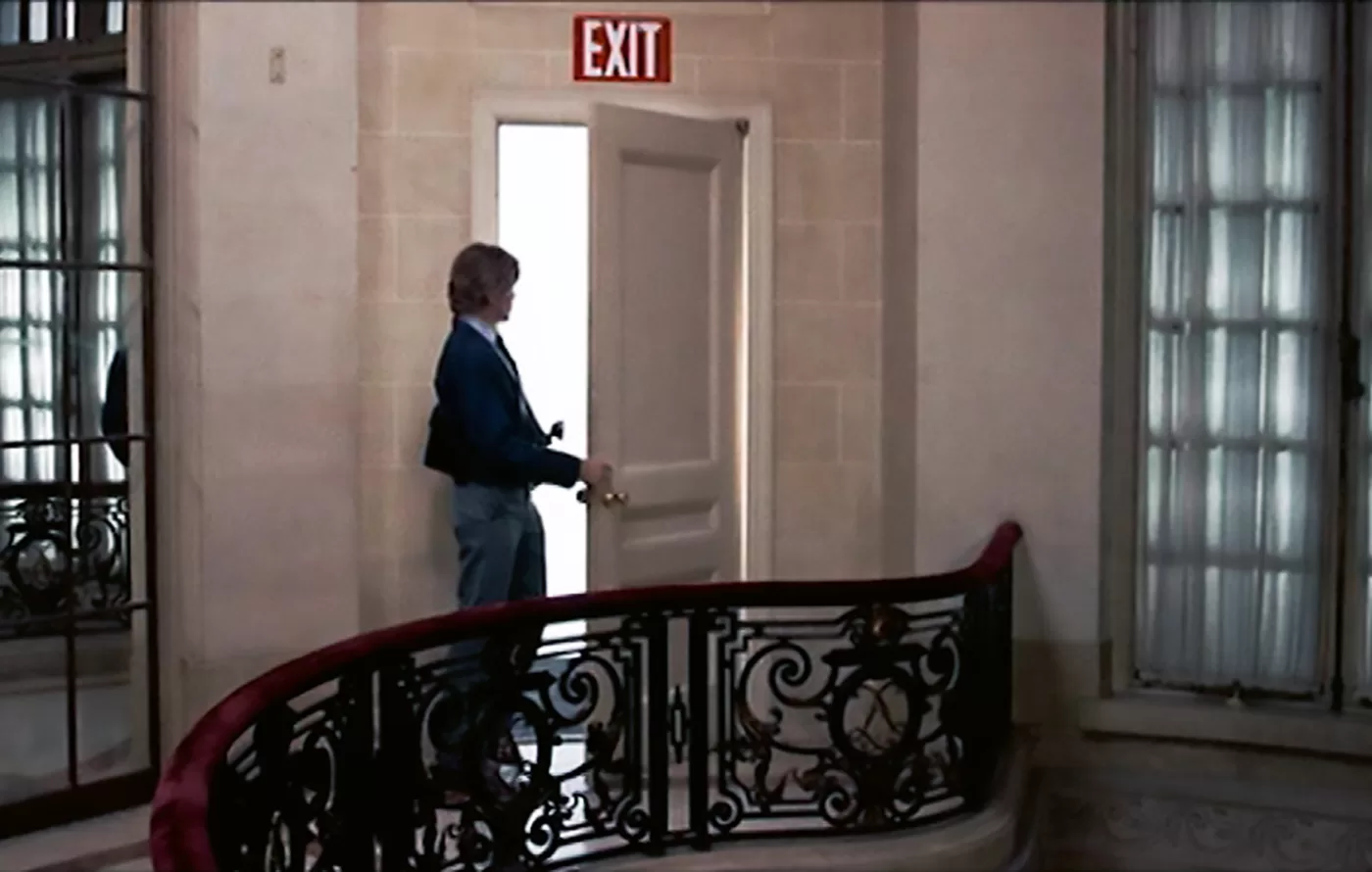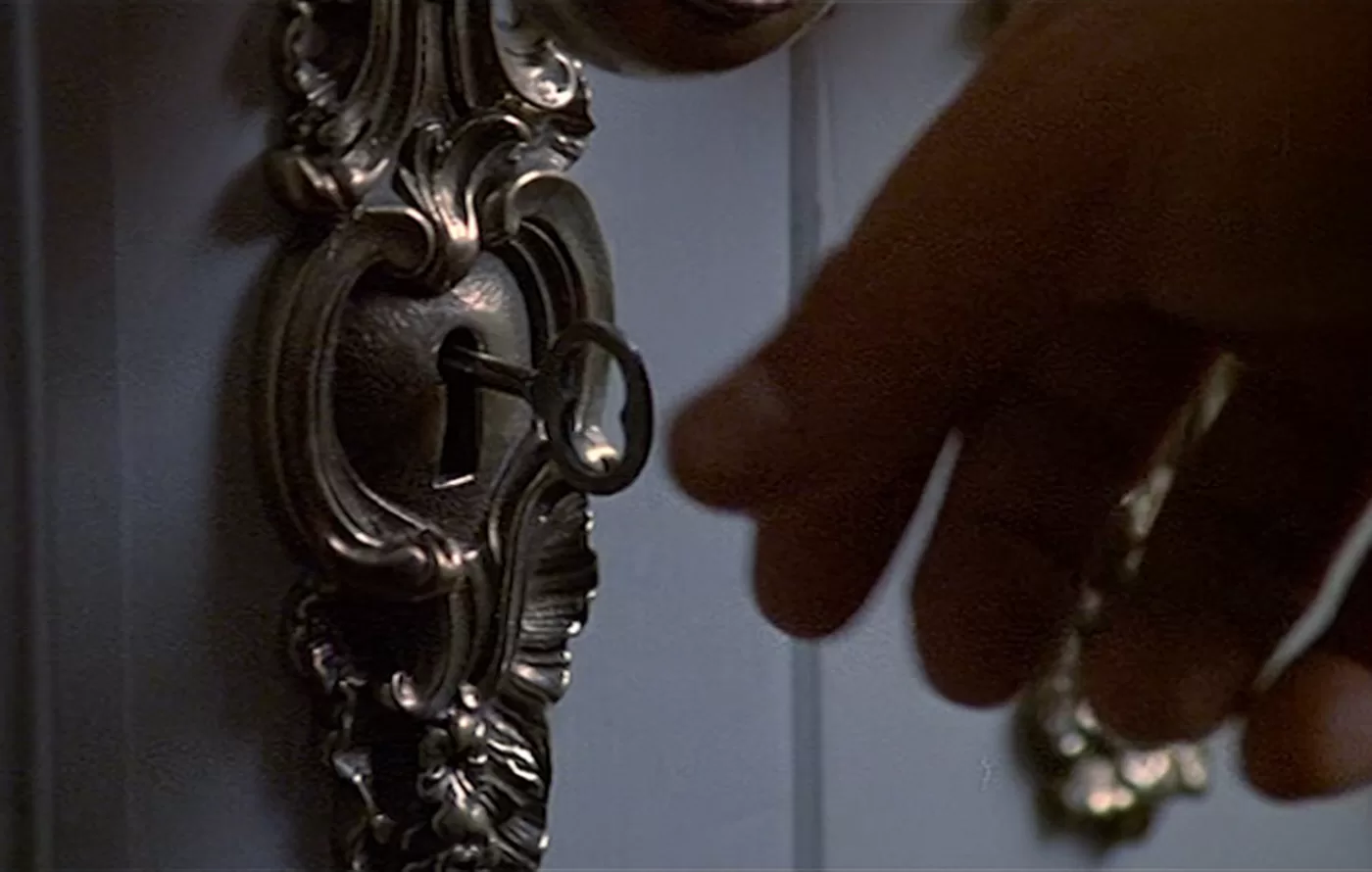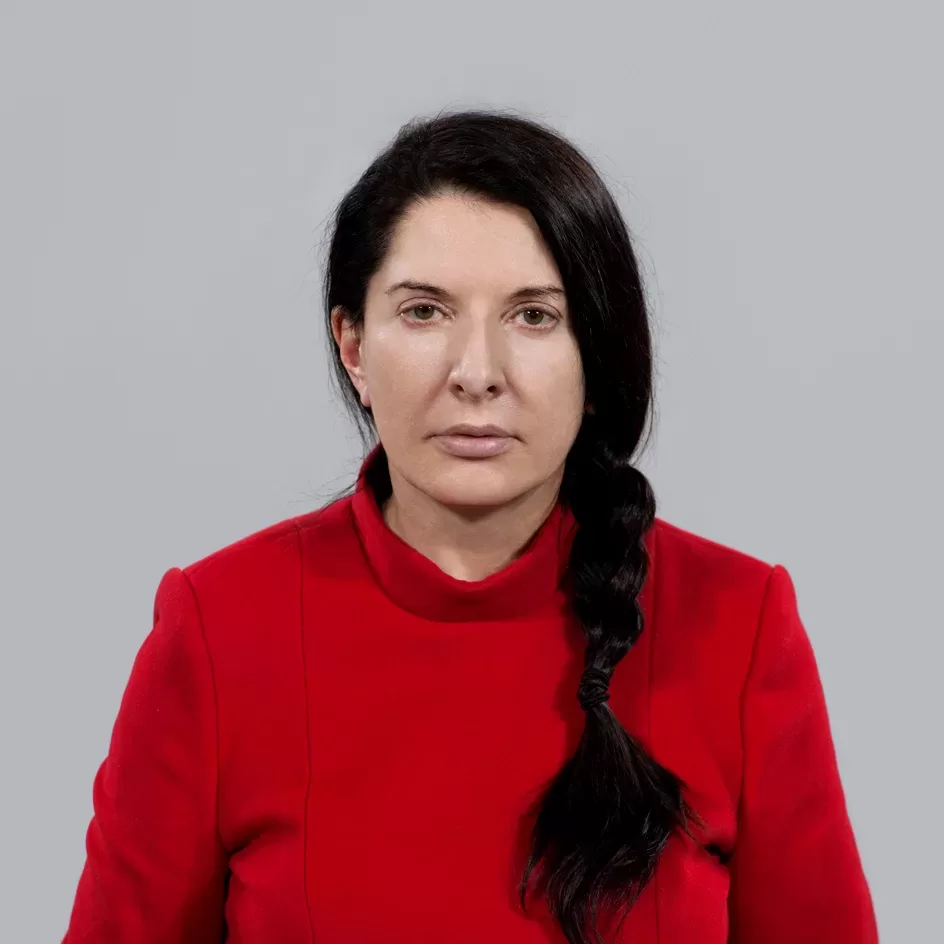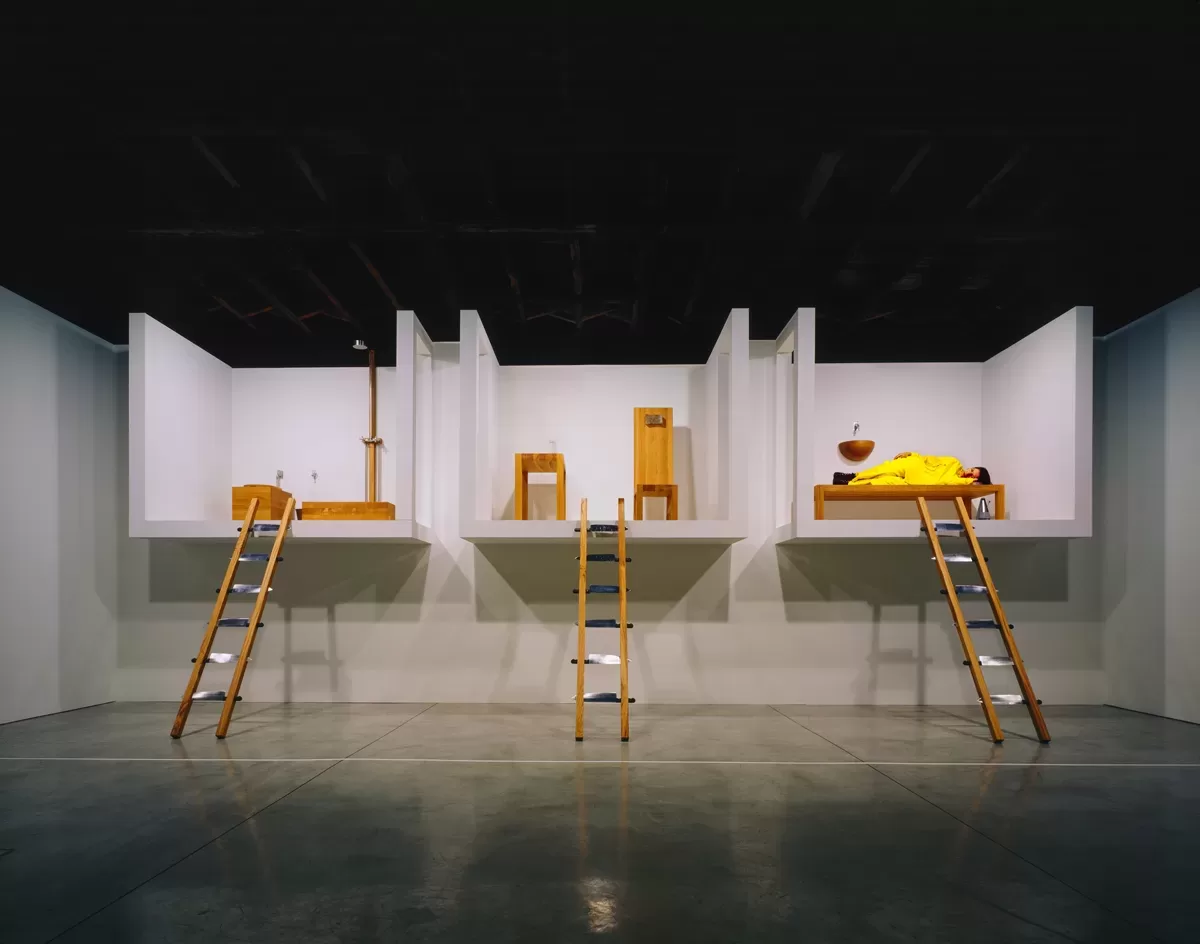Who still has time for durational art?
6 min read
Patience is at a premium, but how is endurance art still managing to hold attention spans? Elise Bell explores, through Marina Abramović and Christian Marclay

Christian Marclay, Doors, 2022. Single-channel video installation Projection, colour and black & white Continuous loop. © Christian Marclay. Courtesy White Cube
For a chronically impatient person, the patient art of Christian Marclay has always been intriguing. Lean, and with the crisp, manicured look of an architect, the sixty-eight-year-old artist has carved a career out of the movies, trawling through thousands of hours of footage for one perfect shot.
In Telephones (1995) that “one perfect shot” consisted of people answering the phone, the film uses more than one hundred spliced clips from popular TV and cinema to create a deft portrayal of human connection and communication. The formula was repeated in The Clock (2010), with Marclay and a team of basement-bound assistants piecing together 1,440 minutes of disparate film, each minute accounting for a different time. The impact of the work was profound. Worldwide tours followed. The novelist Zadie Smith labelled the work as “The greatest film you’ve ever seen” and members of the public queued in the early hours to sit through its rare full screenings. I know this because I was one of them, standing outside the Tate Modern at 2 am in the pouring rain; a pilgrim with a devotion to durational art. Art can do that to you.

Christian Marclay, Doors, 2022. Single-channel video installation Projection, colour and black & white Continuous loop. © Christian Marclay. Courtesy White Cube
For his latest, Marclay has continued the trend. Based downstairs in the White Cube’s Mason’s Yard location, Doors (2022) follows a similar rubric, swapping telephones and clocks for the opening and closing of doors. Bleeding from one scene into the other, cops chase bank robbers across thresholds, only for the door to open into a lover’s embrace, the contextual gap between the two setpieces blurring into one seamless exchange. There is a hallucinatory aspect to this too, doors opening onto scenes that have already taken place, creating the sense of the film turning inwards and becoming labyrinthine. As I watch the film(s) unravel, I write in capital letters at the top of my notebook: THIS TOOK CHRISTIAN MARCLAY TEN YEARS TO MAKE. Outside the exhibition, I hear this repeated, a girl to her date. It seems we’re all here for the same reason.
What is it about artists taking so long to create a work that it becomes one of its most compelling aspects? It’s a similar story at the Royal Academy’s Marina Abramović retrospective. Walking into the first room, visitors are faced (literally) with a wall of strangers, some weeping, others smiling, and a large majority looking stoically into the middle distance. They’re gazing at Marina, her own face beamed across several monitors on the other side of the wall. Recorded during Ambramović’s three-month performance of The Artist is Present (2010), Abramović spent seven and a half hours every day looking absently into the eyes of strangers, resisting all food, water or movement whilst she was seated. What these strangers are looking for as they sit before Abramović feels apparent: to submit to the vulnerability that comes with being looked at, to feel like you are known, to witness history, to be part of the spectacle.

Marina Abramović, The Artist is Present, 2010. Performance; 3 months. The Museum of Modern Art, New York. Courtesy of the Marina Abramović Archives. © Marina Abramović. Photo: Marco Anelli
In the Early Modern period, pilgrims would trek across rough terrain for weeks on end with the strong and unerring conviction that to look upon a relic or witness the site of a miracle, it would guarantee the presence of the saint itself. This act of following the work or symbol of an idol transcends just one religion and has existed for millennia, each ritual of following and waiting demanding from worshippers an extreme kind of patience that is rare in everyday life. It’s why viewers came from across the world to bear themselves in front of Ambramovic’s gaze. Is Abramović’s three-month performance any different from ancient mystics fasting in the wilderness? Is Marclay’s ten-year quest for each exacting door a kind of miracle in and of itself?
These episodes of enforced patience are a far cry from the actual reality we live in, where I am forever fighting the urge to stare gormlessly at a phone screen, my mind blank and lobotomised as I flick through reel after reel of nonsense; Texan sorority girls lip syncing in unison to a deranged EDM beat; a man in the guise of a viking launching himself out of a human catapult and into a fjord; New York apartment tours; a chihuahua blowing bubbles out of its nose.
Perhaps the appeal of artists like Marclay and Abramović lies in how counter-cultural their own patience feels, as well as the patience they demand from the viewer. Patience is a rare and uncomfortable game (I lasted only three hours of Béla Tarr’s seven-hour Sátántangó) yet it feels more necessary than ever. In an age where it seems like everything can be demanded all at once, there is pleasure to be had in waiting. One can only hope Marclay continues his endless trawl: the longer, the better.
